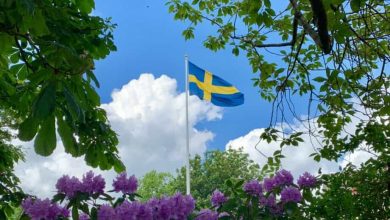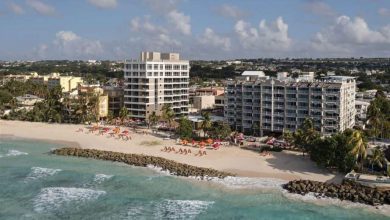Rhythms and Sounds of Brazil: A Musical Palette
/ 2023-02-28 20:42:46
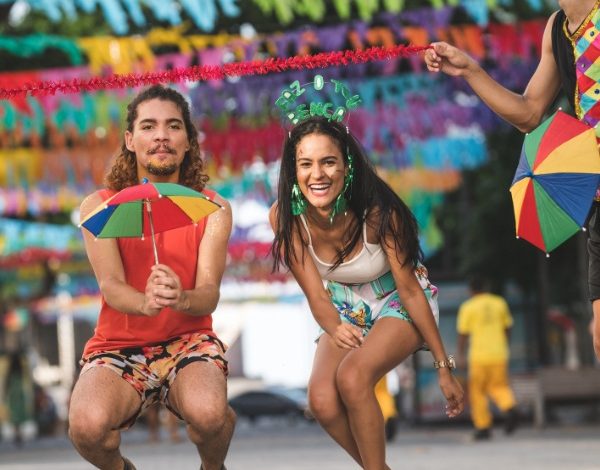
Diplomat.Today
Simone Scorsato
2023-02-28 20:42:46
——————————————-
In a country of continental proportions like Brazil – with more than 8 million square kilometers (3.2 million square miles) – the rich diversity is reflected not only in the variety of ecosystems, but especially in the people, culture and musicality in the five different regions .
With a mixed population that combines cultures of indigenous peoples, Europeans and Africans brought with them during the colonial period, the result cannot but have been an explosion of rhythms and sounds that resonate in Brazilian daily life. In this geography of sounds, histories and traditions, some rhythms better reflect the identity of each region.
Bumba Meu Boi, Carimbo and Lambada
For example, in the north, African culture mixed with indigenous traditions and a touch of European influence resulted in a colorful folklore festival called Bumba Meu Boi, which is celebrated throughout the Amazon region. Inspired by carimbó, the cheerful lambada is danced in pairs and conquered Europe in the late eighties.
Once in the Amazon, a must-go in Manaus is the Amazon Theatre, where you can not only visit the imposing construction of eclectic Renaissance architectural style, but also watch spectacles of popular rhythms, dance, classical music and drama. Opened in 1896, it was listed as a National Historic Heritage Site in 1966 and is considered one of the most important sites for appreciating and disseminating cultural and artistic expression in the region.
A stone’s throw from the theater you can stay in the charming Hotel Villa Amazônia. It is a historic mansion from the golden age of the rubber industry that has been completely restored. It has 30 apartments, all overlooking an incredible courtyard garden with a natural stone swimming pool.
Frevo, Zabumba, Accordion and Axe
In the Northeast, no one can resist the rhythm of the frevo from Pernambuco and the triangles, zabumbas (drums) and accordions that dictate the compelling rhythm of forró in all nine states of the region.
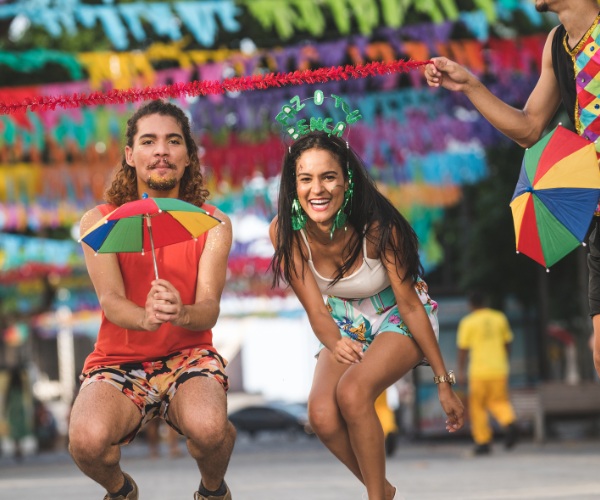
Forró is one of the most famous artistic expressions of this sunny region. It originated in Pernambuco and spread as a migration to other places, including outside Brazil. According to tradition, the name comes from the English phrase “for all”, referring to the parties organized by English railway builders. The invitation was “for everyone”, which was adapted to the local pronunciation as “forró”.
Also in Pernambuco, frevo and maracatu dominate the great carnival festival, especially in the city of Olinda, an important cultural center in Brazil. In this municipality, bordering Recife, declared a historical and cultural heritage of humanity by UNESCO in 1982, the party is guaranteed with giant dolls circulating among countless groups of revelers in the streets.
After the party, a good option is to discover the coast of Pernambuco and rest in the best resort in the region, Nannai Muro Alto. Surrounded by Atlantic forest, coconut palms and mangroves, the property faces an ocean protected by reefs that form a natural pool of warm, crystal clear water.
In Bahia, ax is not only a style of music, but also a positive mood. Locals usually say that they wish someone a lot of “axe”. Amidst batuques (drumming) and afoxés, the Bahian ginga (swing) has African roots and multiple meanings of religiosity, faith and struggle. Afoxés are carnival blocks such as Ilê Aiyê (1974), the first Afro-Brazilian group to express the fight against racism through music, dance and clothing, and Filhos de Gandhi, founded by stevedores in 1949 to demonstrate non-violence and peace – two examples of movements that honor the African roots of Brazilian culture.
In Salvador, an accommodation option is the famous Fasano Salvador, which is housed in a historic building listed as Cultural Assets of Bahia, which was the first headquarters of the newspaper “A Tarde” for 45 years. Located in Castro Alves Square, in the historic center of Salvador, the hotel offers unparalleled views of the Bay of All Saints.
Bossa Nova, MPB (Brazilian popular music), Samba, Rock (Samba Rock), Funk…
It is from the southeast that the most famous Brazilian genres resound all over the world: samba, united with Carnival and Brazil anywhere in the world, and bossa nova, one of the most influential currents in Brazilian popular music, which began in the 1970s. 1940 and was immortalized in countless songs by his greatest voice, João Gilberto.

A meeting of Bahians, Paulistas and Cariocas in 1968 resulted in the so-called Tropicália movement, a landmark in Brazilian culture, where irreverence and boldness with guitar accents, long curly hair and overly colorful clothing sparked changes not only in music. , but also in morals and behaviour. Influenced by the hippie counterculture, Brazilian popular music took on notes of rebellion, peace and love in the voices of Gilberto Gil, Caetano Veloso, Gal Costa, Elis Regina, Tim Maia, Os Mutantes and more.
IMPORTANT ANNOUNCEMENT:
If you are reading this article anywhere other than A Luxury Travel Blog, chances are this content has been stolen without permission.
Please note the web address above and contact A Luxury Travel Blog to notify them of this issue.
Thank you for helping us fight content theft.
And there’s also Funk Carioca, who has hit the charts worldwide with Anitta’s voice and stage performance.
The cities of São Paulo and Rio de Janeiro have no shortage of options for concert venues and shows. Culture, music, art and dance take place all year round in both metropolises. São Paulo has no shortage of luxury accommodation icons such as Fasano, Emiliano and Unique. And Rio de Janeiro has Fasano, Emiliano Rio, Copacabana Palace (by Belmond Hotel), Fairmont Rio de Janeiro and MGallery Santa Teresa, in the bohemian district of Santa Teresa.
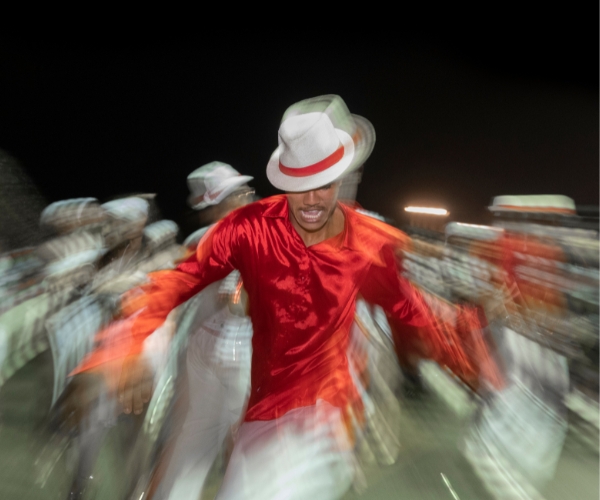
The list of Brazilian rhythms, composers and singers is long. This is not intended to cover the whole subject, but rather arouses your desire to “listen more to Brazil”.
Simone Scorsato is Executive Director of the Brazilian Luxury Travel Association. BLTA’s main goal is to promote and strengthen Brazil as a travel destination in the global luxury market.
If you would like to become a guest blogger on A Luxury Travel Blog to boost your profile, please contact us.
——————————————-

